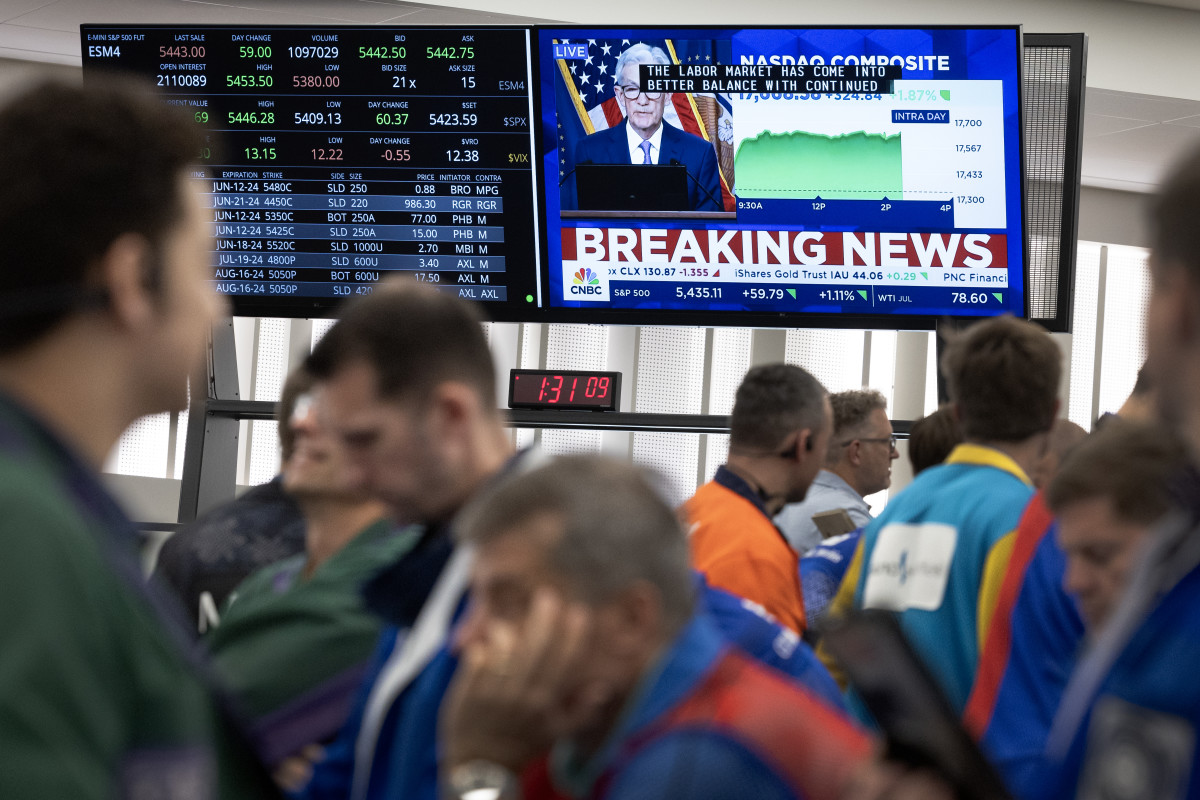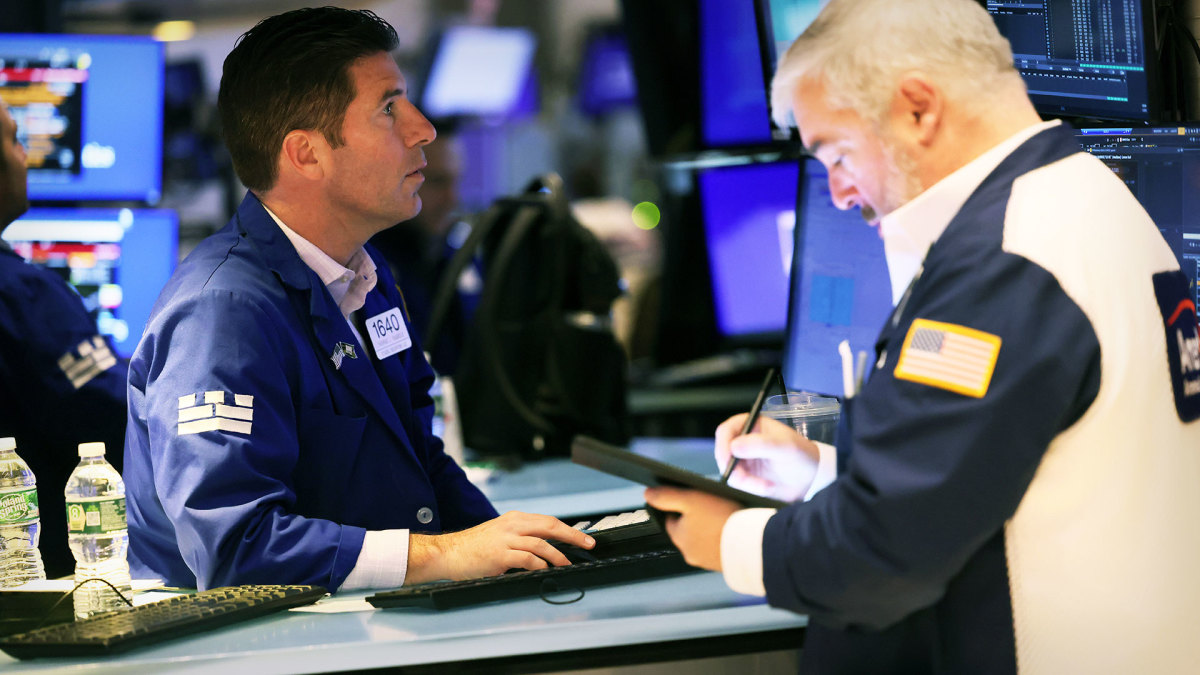
Investors would be well advised to get some much-needed rest over the Labor Day weekend, having endured an exhausting summer of Federal Reserve interest-rate debates, unprecedented presidential election changes, a historic spike in market volatility and a chaotic August pullback and rally.
The dizzying spate of events, capped by a curiously underwhelming second quarter earnings report from Nvidia (NVDA) last week, has left stocks holding onto modest, and possibly tenuous, gains heading into the final month of the third quarter and what could be a critical stretch for U.S. stocks into year's end.
The Fed's first autumn rate meeting, which will wrap up on Sept. 18, looms as likely the largest risk event of the quarter. Investors then will focus on the first series of third quarter earnings reports, the final stretch of the U.S. presidential election season, and the ongoing impact of the war in Ukraine, Israel's war in Gaza and China's renewed threats to Taiwan.
But while the first of those events is likely to capture the lion's share of market and media attention, it might not be the driver for near-term stock gains that some are expecting.

Michael M. Santiago/Getty Images
An in-line reading of the Fed's preferred inflation gauge, the PCE Price Index, for the month of July has largely cemented bets that the Fed will begin a series of interest-rate cuts, the first in four years, next month in Washington.
'As Goldilocks as it gets'
"This is as Goldilocks as it gets," said Jamie Cox, managing partner for Harris Financial Group in Richmond, Va. "The consumer remains strong and disinflation is clear."
"However, there is no justification whatsoever for [a half-point rate cut] in September," he added. "The Fed will be able to normalize rates slowly, in quarter point increments."
While that may be true, odds collected from CME Group's FedWatch tool suggest the Federal Funds Rate will fall by at least one full percentage point, to 4.375%, by December, with more reductions planned for the first quarter of next year.
Related: Inflation report cements interest rate cut bets
That likely means at least one outsized rate cut, either just after the November elections or at the December meeting, to reach the market's forecast.
The problem, however, is that regardless of the pace, stocks don't usually perform well in the wake of a Fed rate-cut cycle, according to LPL Financial's chief technical strategist, Adam Turnquist, although they do tend to move higher on a medium-term horizon.
Rate cuts often signal pullbacks
"Based on the last nine major rate hiking cycles since the 1970s, the S&P 500 has generated mixed, modest returns over the three months following the first cut, with 12-month average and median returns of 5.5% and 10.8%, respectively," Turnquist noted.
"Furthermore, 12-month maximum drawdowns following the first cut have been around 19%–20%, larger declines than the average maximum drawdown for all years since 1974 of 14.4%," he added. "Of course, how the economy holds up and if we enter or avoid a recession will ultimately dictate how stocks perform over the longer term."
The jury on that verdict, however, remains locked in tense deliberations. The Commerce Department pegged second-quarter growth last week at 3%, a firmer-than-expected update tied in part to a surprise surge in consumer spending.
Related: Housing market seeks Fed rate relief as sales slump and prices leap
However, cooling labor-market data, some pointed warnings on spending trends from top U.S. retailers, and the typical uncertainty heading to the final stretch of an election cycle have added to worries that overall growth is slowing sharply into the autumn.
The Atlanta Fed's GDPNow forecasting tool pegs current-quarter growth at 2.5%. That level is likely to abate over the coming weeks as broader activity cools in the wake of the Fed's rate hikes over the past two years.
That puts this week's slate of labor-market data, including the crucial August nonfarm-payrolls report on Sept. 6, acutely in focus.
Jobs data in focus
Elizabeth Renter, senior economist at consumer advocate NerdWallet, said that the collective reports are likely to underscore the current cooling-market narrative, but she isn't expecting any major surprises.
"I don’t anticipate a jump in the unemployment rate, considering initial claims have been pretty steady, and while we may see more jobs added this month than last, the overall path will remain low relative to last year and even early 2024," she said.
Corporate earnings growth is also set for a third-quarter slowdown, with collective S&P 500 profits forecast to rise 5.1%, down sharply from the 12.7% pace recorded over the three months ended in June, according to LSEG estimates.
Related: Nvidia earnings key to market rally after Fed lays rate cards on table
Data tracking flows from the world's biggest fund managers also suggest a defensive tenor heading into the autumn, with Bank of America's weekly Flow Show report noting an $8.4 billion move into Treasury funds, the biggest in nearly a year, with another $24.5 billion allocated to high-yielding cash assets.
LPL's Turnquist also points out that September has historically been a challenging month for U.S. investors, with muted trading in the opening weeks giving way to weakness as the third quarter draws to a close.
Bullish breadth or bearish tech?
"Since 1950, the S&P 500 has generated an average return of -0.7% in September and finished higher only 43% of the time, making it the worst month for stocks on an average return and positivity rate basis," Turnquist said.
"The last four Septembers have also been notably weak, with the index posting declines of 4.9%, 9.3%, 4.8%, and 3.9%."
On the positive side, market breadth has been improving notably since the Magnificent 7 dominance of the second quarter, with around 70% of U.S. stocks having outperformed the S&P 500 since June, according to Bank of America data.
In fact, since early July, the Magnificent 7 stocks are down 10.2% as a collective, while the other 493 stocks in the S&P 500 are up 4.1%
Coming off a recent hot streak for the Dow Jones Industrial Average, which closed at a record last Friday, Ryan Detrick, chief market strategist at Carson Group, has identified an interesting quirk.
"Since 1900 the U.S. economy has been in a recession 22.4% of the time ... but six months after a new all-time high in the Dow it has been in a recession only 8.9% of the time?" Carson wrote in a recent blogpost.
More Economic Analysis:
- Kamala Harris sees markets stars align against Donald Trump
- CPI report upsets betting on big Fed rate cut
- Main Street businesses push back on Wall Street recession gloom
"The last time it hit a new high during a recession was in late 1982, which also kicked off a huge bull market," he added.
Enjoy the long weekend. But be in your seats and ready for class when the market reboots on Sept. 3.
Related: Veteran fund manager sees world of pain coming for stocks







